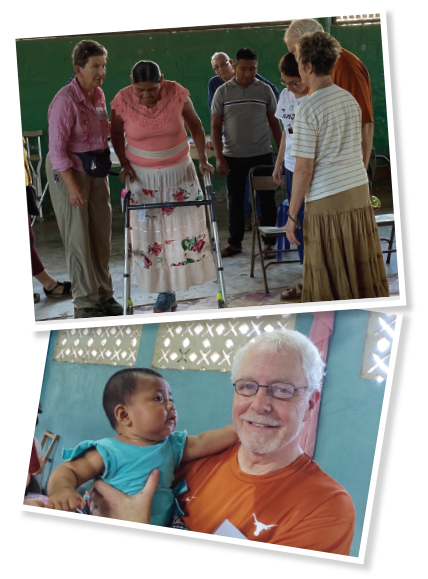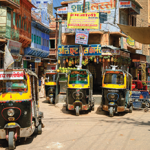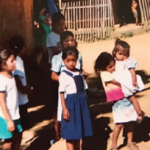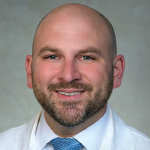My first-ever medical mission trip, after 37 years of medical practice, was to Teleman, Alta Verapaz, Guatemala. Prior to the trip, my excitement as an adult-trained rheumatologist was balanced against my apprehension about witnessing new diseases, caring for children and practicing in an austere environment with limited medical resources.
As directed by the travel clinic, my immunizations were updated, my clothes sprayed with permethrin insect repellant, the tube of insect cream I carried had over 30% DEET (N,N-diethyl-m-toluamide), and I started atovaquone/proguanil tablets for malaria prophylaxis. My carry-on suitcase and backpack were rechecked and repacked many times before this one-week journey as my itinerary and guidelines were updated.
Welcome to Guatemala
I met my medical team with medical supplies at the George Bush Intercontinental Airport in Houston on March 8, 2020. The two-and-one-half-hour flight to Guatemala City was followed by a wearisome seven-hour bus ride in the rain. We traveled at 30 miles per hour through winding green-topped mountains, many two-lane villages and finally arrived in the valley of our remote destination at nightfall.
The fatigue of the travel did not diminish my excitement. I stepped off the bus and was welcomed by a Guatemalan woman wearing a Villanova University T-shirt; this made me smile because I’ve been a Villanova basketball fan since my childhood in Philadelphia. Shortly after unloading our supplies, we met our hosts for housing.
Arnoldo was my house host and a maestro (teacher) by occupation who lives with his mama. With many shared apologies, we both quickly discovered that my un poquito Spanish was as poor as his English. As the week progressed, we managed Spanish to English translations using our iPhones. It was equally fun for both of us to use iPhone translations for simple, end-of-workday chats. The iPhone translation was especially helpful after I examined his mother in the kitchen with classic Heberden’s and Bouchard’s nodules of her hands and valgus deformities of her knees. As you can imagine, my clinical assessment was way easier than finding the correct verbiage regarding osteoarthritis (OA) and recommendations, including physical therapy.
The rain persisted the following morning at 6 a.m. Our priority was to organize medical supplies for clinic that afternoon and for the many days to follow. The raindrops rhythmically beat the metal roof above our open patio and only a cyclone fence separated us from the yakking of roosters, ducks and hens. Team members spoke above the background noise as we sorted the medications, clothing and toys, bonding over stories, past experiences and laughter. Positive energy was deep-rooted as the 20-person team, including doctors, nurses, dentists, physical therapists, engineers, teachers, students, logisticians, translators and a chaplain, got acquainted.
Village Medicine

Top: An amputee with a broken wheelchair learns to use a walker.
Dr. Battafarano holds a baby.
Each day we traveled in an old, yellow school bus with broken windows to a different small village, passing through flooded areas, rainforests and plantations to establish mobile clinics under the metal roof of a church or in building shells with dirt floors. Our cell phones, without reception, were limited to taking photographs, but this also insulated us from any distractions back home. The verdant landscape and majestic mountains in the background did not hide the nearby images of poverty and shacks.
Small-statured adults standing in never-ending lines waited patiently to be seen, even after walking for hours to present their chief complaint. It was rare to see anyone smoking any form of tobacco. All of the patients respectfully arrived well groomed, despite their long travels. Most women wore colorful skirts and sandals, sometimes a flashy rosary hung from a woman’s neck as if it were a piece of jewelry. Their Mayan features were distinct, with dark eyes, some with sleepy eyelids, high cheekbones and straight, black hair. My own fair skin, blue eyes and gray-white hair was a contrast for the babies in my arms, who curiously tugged my hair and white goatee. The children appeared so innocent and adorable. Patients were usually accompanied by at least three well-behaved children, with the oldest clearly assisting mom with the clan. Children ran around, happily playing simple games as if they were in a city park.
The demeanor of each patient was generally very pleasant, respectful, yet stoic. Each adult patient carried a clinical paper to their exam station with their first name, age and, sometimes, a chief complaint. I celebrated every person’s introduction by calling their traditional Spanish names; each one responded with a wide smile, often correcting my pronunciation.
Not until the initial clinic did I realize we needed two translators for each patient. My English questions were translated into Spanish for the bilingual Spanish/Mayan translator who ultimately interviewed the patient in Q’eqchi (pronounced kekchi) and translated the responses back, in reverse, for each patient encounter.
After thorough, back-and-forth translated interviews regarding complaints or concerns, I was able to focus on my examination. Like in Texas, children and adults had common infections, but scabies, parasites and poor dentition were common, too. Overuse syndromes and OA were frequently seen, consistent with their demanding farming and physical lifestyles. Occasional soft tissue injections were necessary.
To my surprise, not one patient over five days of clinic had inflammatory joints, rheumatoid arthritis (RA) or rheumatic fever.
A 12-year-old boy presented with symmetrical, nontender bony hypertrophy of bilateral distal radii and proximal tibias, but no synovitis, and full range of motion in his fingers, wrists and knees. We referred him to a medical center for an optimal assessment with imaging studies.
Chronic pain symptoms were distinctly absent. I only saw two women during the entire week with obvious fibromyalgia and associated depression. One patient had a physically abusive marriage, and the other mother was grieving the loss of her 4-month-old child. Unfortunately, consults to psychology or social work were not an option in this community.
Many slender patients presented with new-onset, type 2 diabetes mellitus (DM), with fingerstick glucose levels over 350 mg/dL, but they lacked the apple-shaped body habitus. Dangerously high hypertension was responsive to clonidine therapy, thankfully. Thyroid goiters were readily observed in clinically euthyroid patients. Breast masses and ascites had to be facilitated to a medical center in Guatemala City by our local colleagues.
Before leaving clinic with their vitamins, every patient took a swig of albendazole for possible parasites.
In the end, I suspected there must have been some cardiac, stroke and/or cancer patients in their homes who were too frail to make it to our clinic.
We rendered medical care nonstop all day, yet each day felt like a refreshing treat without the headaches caused by using electronic medical records or delays waiting for drug approvals.
Adults were appreciative of their medical care in each interaction. Selected patients were fitted by a physical therapist with donated shoes to prevent infections or to improve a disabling gait. A couple of times, a team member donated perfectly sized running shoes right off their own feet for individual patients and swapped another pair to wear from the donated shoe bin, even if they were too large. Young children could not have been happier leaving the clinic with gifts of simple toys, and the girls, especially were excited about pretty, hand-me-down clothes.
Daily Life
On the bus rides back to Teleman, my mind would wander as I looked out the window at the marvelous scenery, with feelings of contentment after caring for appreciative patients. These feelings were mixed with the overwhelming paradox of the impoverished lifestyles of all the Mayan people. There is no middle class here, just those who have and—mostly—those who have not.
Being in the present with these people and this community gave me great insight into the many blessings in my life. These Mayan people are experts at daily living. Their clear priorities are caring for family, preparing the next meal, washing clothes, sheltering from the sun and rain, staying healthy and praying faithfully. Their modest lifestyle was replete with humble joy.
After eating dinner each night, I walked a mile to my host home, arriving by 8 p.m. As crazy as it sounds, I looked forward to my cold shower after traveling in dust, working in a poorly ventilated clinic and organizing medical supplies for the next day. My bedroom had a low ceiling by the shared bathroom. At times, I could overhear others sighing or deeply murmuring under the cold water for a quick rinse or a fast dance. By the end of the week, I had mastered my strategy to get cold water clean and free of insect repellent, at least for overnight. Once under the bed’s mosquito net and with ear plugs in place, to avoid hearing roosters and ducks all night, I consistently dosed off in spite of my good intentions to read.
Last Call
Our last day of clinic was profoundly busy. The community knew we were leaving the following day, so many last-minute patients stood in line, and others were carried into clinic. A very rigid Parkinson’s patient arrived. Without carbidopa/levodopa, we could only compassionately help, providing some training in activities of daily living and coordinate a referral to a neurologist via a community resource person.
One woman, a middle-aged amputee, was carried into morning clinic with a broken manual wheelchair; ultimately, she was trained that day to successfully use a walker and plans were developed for her to obtain a replacement wheelchair. Another elderly man was treated for a severe urinary tract infection and was driven home with plenty of antibiotics.
By the end of the day, we were running short on medications for hypertension and diabetes—a sign that our mission trip was coming to an end. We were able to focus on caring for the poorest of the poor and benefit from being with them in the present moment(s).
It was not until our last dinner together that I suddenly became speechless when asked to comment on what was special for me during this mission trip. After gathering my emotions, I explained my most unanticipated surprise was being immersed with a medical team that had limitless compassion and shared values. Everyone provided the best for the patients and for each other in the spirit of do no harm and living by the golden rule. Words cannot describe my feeling of gratitude.
At the Guatemala City airport the following morning, we discovered Guatemala had confirmed its first diagnosed case of coronavirus on March 15. All of our cell phones were now buzzing with COVID-19 update texts and emails from back home. Our flight was the last flight out of Guatemala back to the U.S.
My true peace in Guatemala had come to an end.
Daniel F. Battafarano, DO, MACP, FACR, is a rheumatology consultant for CommuniCare and adjoint professor of medicine, University of Texas Health San Antonio. He is a member of the ACR Board of Directors.



